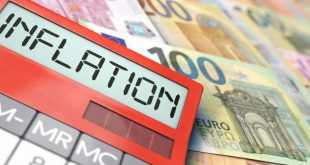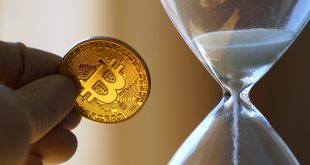The Federal Reserve has just raised its benchmark interest rate for the first time since 2018, but it is already time for the market to look beyond this move.
While there are complicating factors such as the war in Ukraine, the most prominent issue for the Fed is that economic growth remains quite strong. Markets’ main concern was that if the Fed remained shy about raising rates and reducing the balance sheet because of war, there would be a risk that it gets even further behind on inflation.
There are risks on both sides of the Fed equation. If it is too hawkish and tightens too quickly, that can send the financial markets into a convulsion and lead to a mass selling of risk assets which feeds back into the real economy.
Recent action in the bond market showing a narrowing of the spread between the two-year and 10-year treasuries stoked fears of an inverted yield curve, which is a signal that this worst-case, recessionary scenario could play out.
Fed Chair Jerome Powell indicated during latest testimony that he sees inflation running a little faster than the Fed’s previous expectation, and any adjustment from the Fed is significant. But the view of the inflation outlook remains much higher than the median forecast of 2.7% year over year through Q4 2022, closer to 4% than 3%. This is based on a labour market that is strong and a consumer that is resilient, and the Fed being behind the curve on inflation already.
While oil prices and the pain at the pump, which eased this week, caught the market’s attention amid the outbreak of war in Europe, food prices have double the weight of energy in the consumer price index and loom as an even larger factor in the inflation outlook and are not immune to war. Commodities prices rising sharping are likely to get worse because of Russia’s invasion of Ukraine, which impacts the production of wheat, among other commodities, and will reverberate through the global supply chain and turbocharge food prices even higher.
The US economy is not immune to the war, but compared to Europe’s economy, it is much better insulated.
The Fed has to come in. It cannot control the war even if there is a knock-on effect in supply chains and scarcity of food and oil occur. There is also no way for a central bank to project the potential for a ceasefire in war.
The war could potentially delay the Fed’s balance sheet runoff, but by a month or two, and in her view, it should not alter the general path of normalization of both rates and the Fed’s holdings in the bond market.
While this week’s producer price index showed a slight undershoot of the inflation expectation and the latest wage inflation reading came down, the recent flow of data has reinforced that the inflationary pressures are still widespread and elevated. The market has already priced in an aggressive rate hike profile. It is noteworthy that the market is already in tightening conditions.
 Noor Trends News, Technical Analysis, Educational Tools and Recommendations
Noor Trends News, Technical Analysis, Educational Tools and Recommendations





